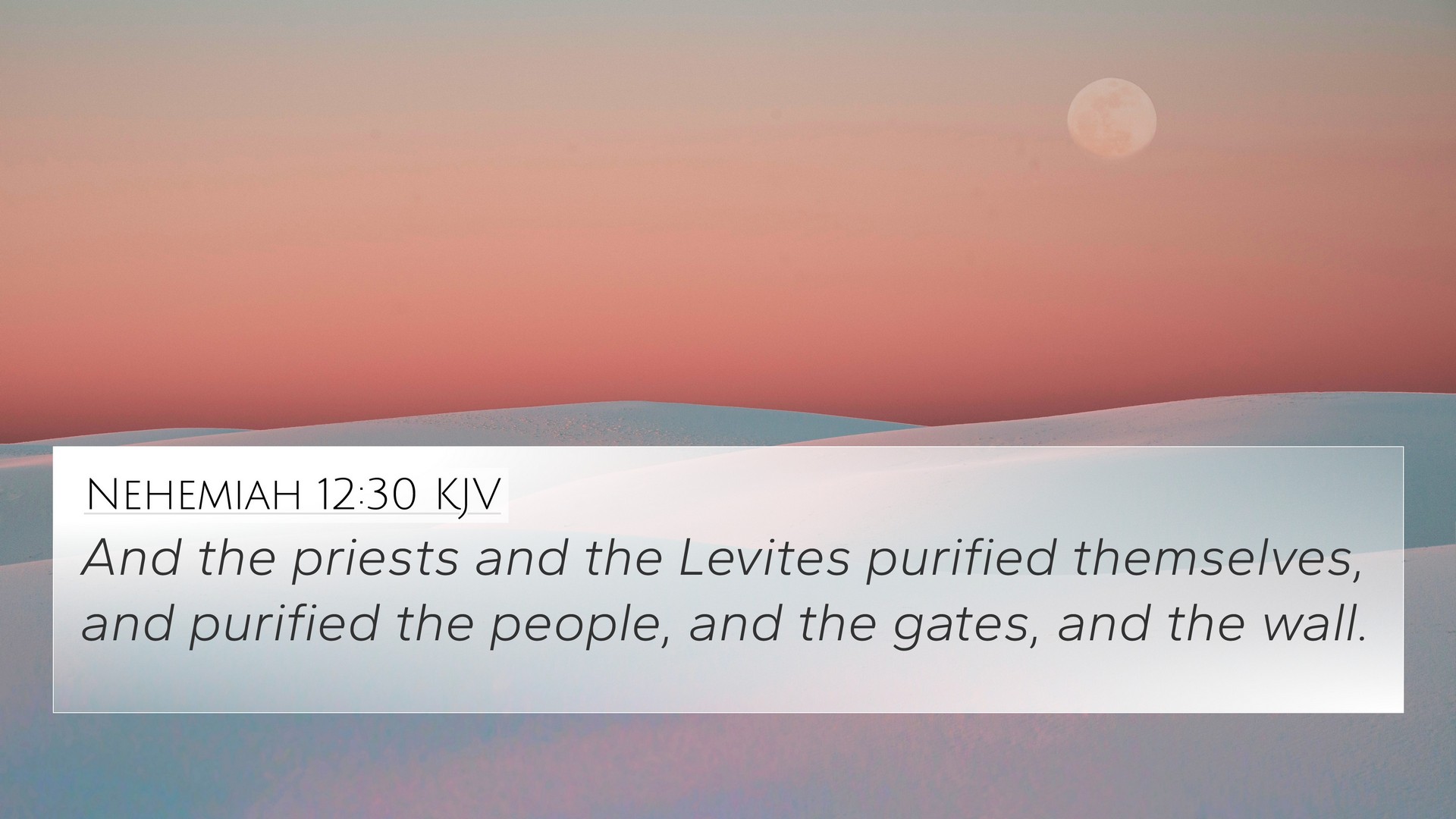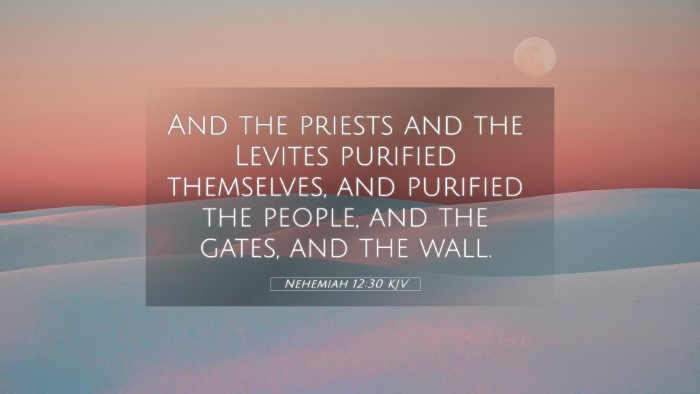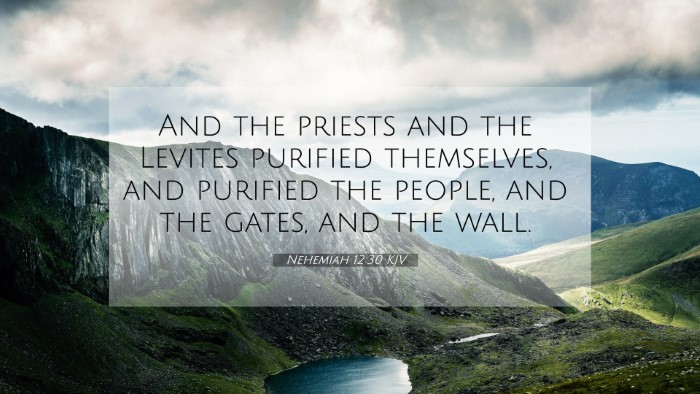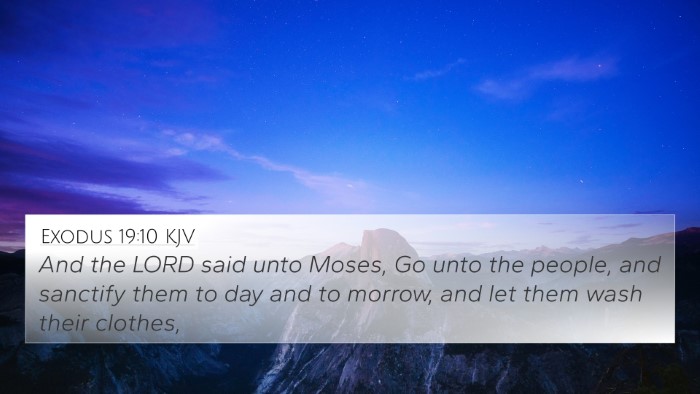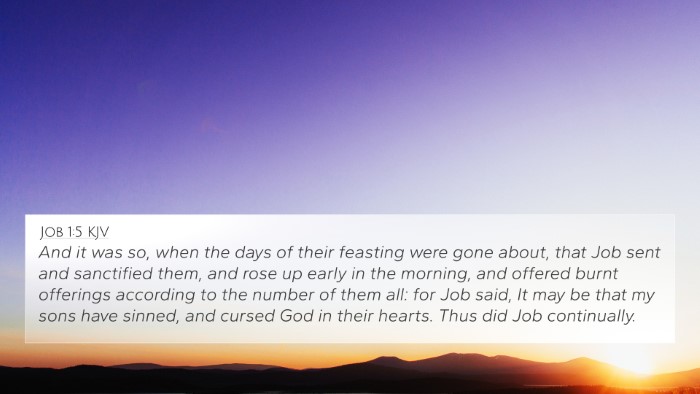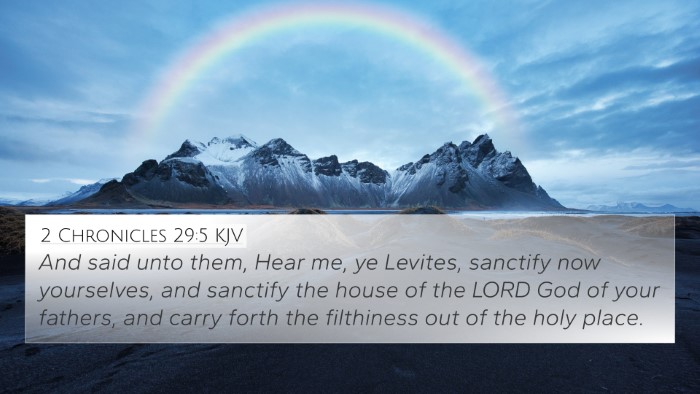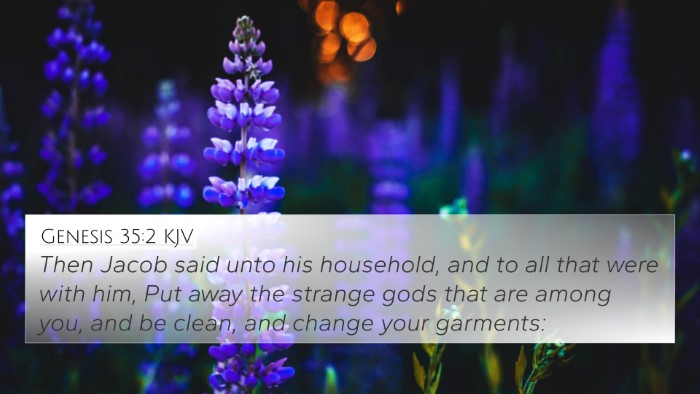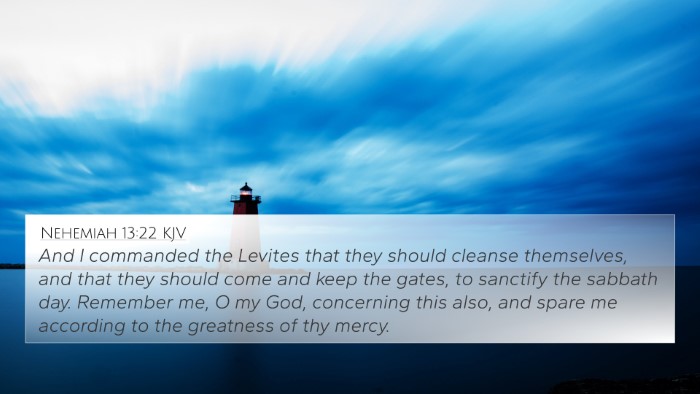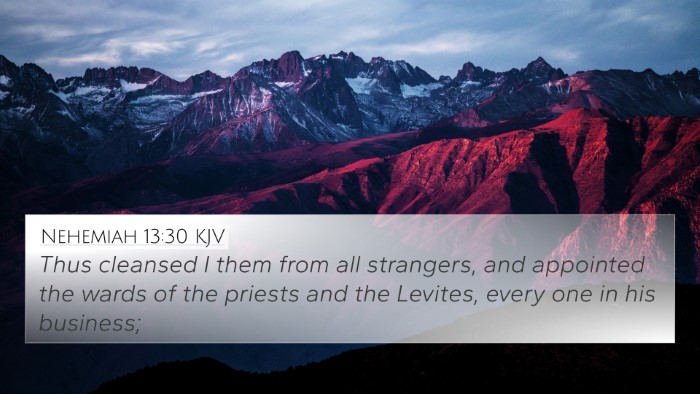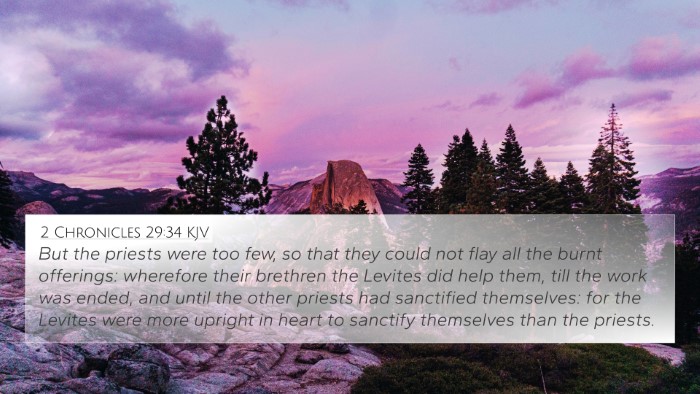Understanding Nehemiah 12:30
Nehemiah 12:30 states: "And the priests and the Levites purified themselves, and they purified the people, and the gates, and the wall." This verse provides a crucial insight into the rituals of purification and the importance placed on holiness and consecration in the rebuilding efforts of the Israelites.
Summary of Commentary Insights
This verse invites us to explore the themes of purification, community responsibility, and the significance of spiritual renewal. Below are synthesized insights from notable public domain commentaries:
Purification and Rituals
Matthew Henry: Henry elucidates that purifying oneself is paramount in approaching God's work. The priestly role is highlighted wherein they not only purify themselves but also lead the community in sanctifying the area around them. This action emphasizes the need for collective holiness before undertaking a sacred task.
Albert Barnes: Barnes notes that the priests and Levites served as spiritual leaders, and their act of purification encompassed both physical spaces and the people. The gates and wall represent not only the physical boundaries of the city but also the spiritual boundaries that must be kept clean to invite God's presence among the people.
Adam Clarke: Clarke adds that the rituals performed were likely in line with the Mosaic Law, signifying a return to proper worship and devotion after years of exile. The thorough purification process reflects the seriousness with which the people regarded their covenant with God and their desire to restore the temple and its services to their former glory.
Connections Between Bible Verses
This verse is interconnected with various other Scripture passages, which highlight the recurring themes of purification and dedication to God. Here are some related verses for further comparative Bible verse analysis:
- Ezra 6:20: The priests and Levites purify themselves before offering sacrifices, emphasizing communal purification.
- 2 Chronicles 30:17-19: Discusses the importance of spiritual cleansing to participate in the Passover.
- Leviticus 16:30: Describes the Day of Atonement, where purification is central to receiving forgiveness.
- Numbers 19:19: Guidelines on purification rituals that illustrate the seriousness of remaining holy.
- Psalms 24:3-5: Questions of who may ascend to the hill of the Lord, which connects to the idea of necessary purification.
- Hebrews 10:22: "Let us draw near with a true heart in full assurance of faith, with our hearts sprinkled clean from an evil conscience.” This speaks to the ultimate fulfillment of purification in Christ.
- James 4:8: Exhorts believers to cleanse their hands and purify their hearts, resonating with the call for communal sanctification.
Inter-Biblical Dialogue
The connections identified animate an inter-Biblical dialogue focused on the importance of holiness. The rituals described in Nehemiah resonate throughout both the Old and New Testaments, reflecting an ongoing pursuit of purity among God's people. Understanding Nehemiah 12:30 in this light enriches the reader's grasp of scriptural cross-referencing and thematic connections:
Thematic Bible Verse Connections
This passage touches upon various important biblical themes:
- Collective Worship and Ritual Practice
- Community Responsibility in Spiritual Matters
- The Necessity of Purity Before God
- Restoration and Renewal after Exile
Tools for Bible Cross-Referencing
For deeper study, utilizing a Bible concordance and Bible cross-reference guide can enhance one’s understanding of the links between different scriptures. These tools aid in identifying connections between Bible verses and facilitate more profound insights into the text.
Conclusion
Nehemiah 12:30 encapsulates the essence of unity and the shared responsibility of the community in attaining holiness. Studying this verse through cross-referencing provides valuable insight into the importance of spiritual cleanliness that permeates the entirety of Scripture.
Further Study Suggestions
To expand your understanding and find more Bible verses related to this passage, consider exploring:
- How to find cross-references in the Bible: Learning to navigate through various study methods can unveil deeper meanings.
- Identifying connections between Old and New Testament: Understanding these links brings clarity to prophecies and fulfillments in Christ.
- Cross-referencing themes in the Bible: This method allows for a thematic exploration of purity and worship across Scriptures.
